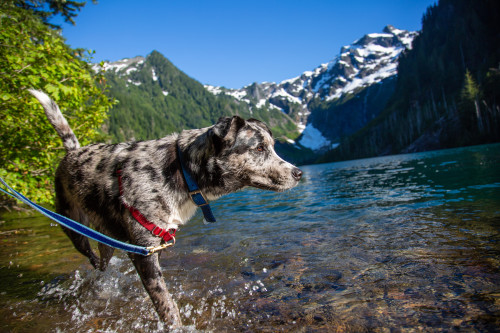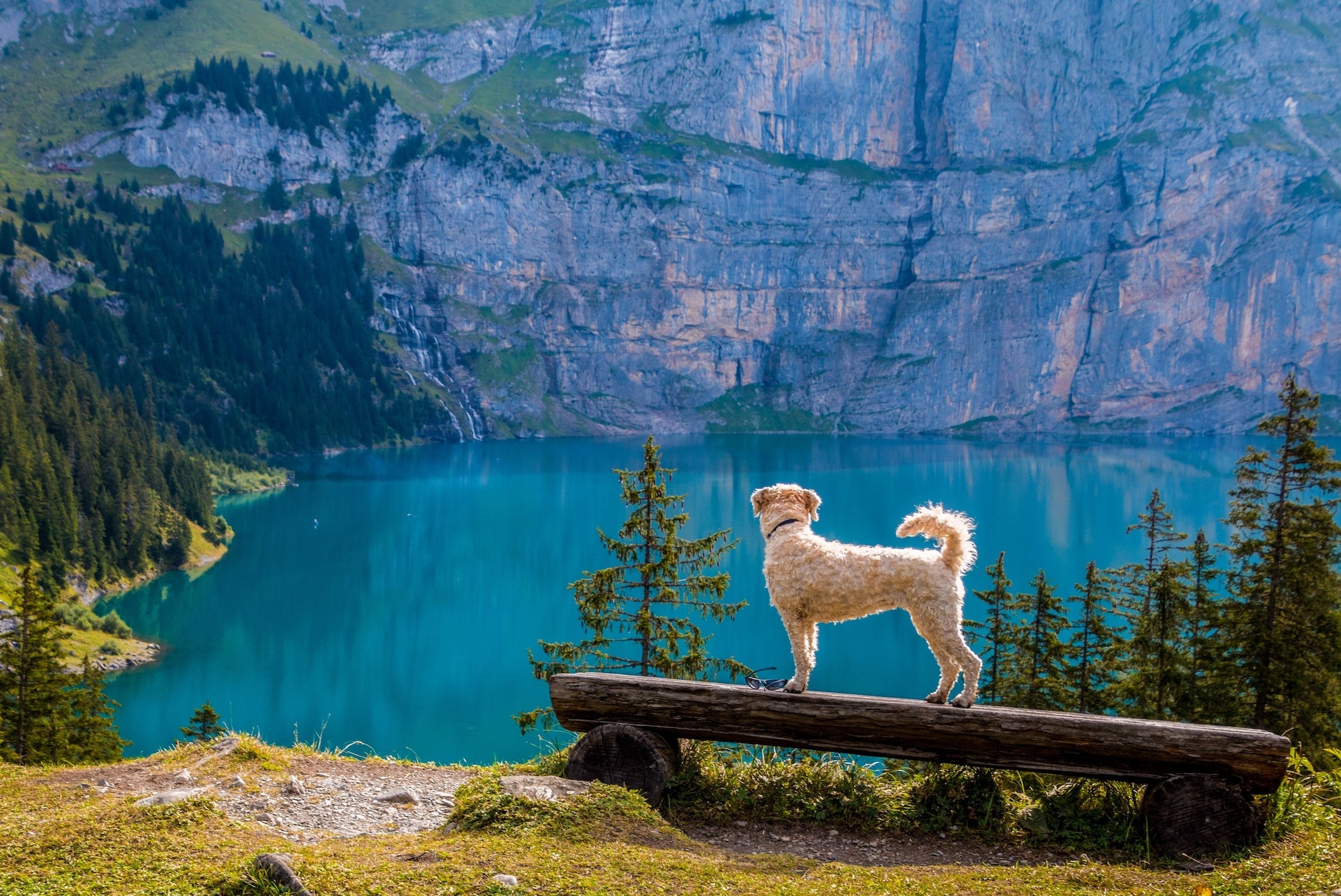Backpacking With Your Dog
Justin
October 18, 2023

Backpacking with your dog can be a great experience, not only for them but for yourself as well! They can add excellent companions on the trail, just as they do at home. But, there are additional considerations when they come along.

Is the trail dog friendly?
Before bringing your dog along on any adventure, check with the land management (NPS, NFS, etc...) for that specific trail prior to packing up. Although many areas allow dogs to tag along, some larger areas such as Yellowstone National Park and Glacier National Park do not allow any pets to venture into undeveloped areas. In other words... Those trails you have been eyeing are out.
Temperature
This is no surprise but dogs have fur! Different breeds will have varying comfort ranges when it comes to how hot or cold it is outside. In cold weather, you may consider getting a coat or vest for your dog if they are not well suited for winter conditions. When it comes to heat, there isn't a lot you can do. Most dogs are not well suited for desert conditions where there is no shade, so maybe avoid bringing them to a Utah desert in July. In more temperate areas, you may consider stopping along streams to allow your dog to get wet and cool off.
Physical conditioning
Just like us, dogs have varying levels of physical conditioning depending on what their home life is like. You wouldn't run a marathon without training first, so don't expect a sedentary dog to take on steep trails with a backpack on. If you plan on taking your dog with you, it would be a good idea to work them up to that sort of physical activity prior to heading out.
Food
While backpacking you need to either carry the food yourself or supply your dog with a backpack to carry their own food. Keep in mind that they will be needing more calories with all of the physical activity, much like yourself. A good rule of thumb is to pack roughly 25% more food than they eat per day at home.
Water
Since dog breeds vary in size greatly, there is no great guideline for the amount of water to bring. Consider how much water they drink on a daily basis at home and pack more than that, especially in hot weather conditions. If there is a water source, you can of course get water while on the trail, but make sure you filter it! Just like with us, dogs can also get sick from the water on the trail. So the same considerations should be made for them. The flip side of this is that you cannot always control what a dog drinks, so sometimes the best you can do is keep them away from obviously dirty water. If they must drink unfiltered, aim for a mountain stream.
How much can a dog pack
Dog packs can be a very handy way to bring your dog without taking up valuable space in your own backpack. It is usually a good idea to work your dog up to packing more weight instead of weighing them down right away. A good rule of thumb is to start at about 10% of their body weight, although once they get used to it they can often carry up to 20% depending on their breed. As always, it is a good idea to get the okay with a veterinarian, especially if they have underlying health issues or are older.
Paw care
We wear shoes, so this is not something we naturally think about while backpacking. But the rocky terrain can be rough on a dogs paws. Especially if they are not used to that sort of thing. You don't necessarily need to buy them boots, but paw wax can be a great addition to make sure your pets feet are taken care of and do not get injured.
Tent Space
Have you ever bought a 2 person tent and though, wow this is too small for two people? Well, same goes for dogs. Realistically, unless you have a small dog, you should count them as a person when considering tent size. I was able to fit a dog in a 2 person tent with 2 people, but it definitely was not the most comfortable thing in the world...
Dog Waste
Just as with human waste, follow the same principles with dog waste! Whatever the requirements for that area (pack out or bury), make sure you do the same for the dog. As a dog owner, it is to all of our benefits! It is important to respect dog etiquette on the trail so that our dogs can also enjoy our trails responsibly.
Wildlife
Wildlife can be very exciting for a dog! All of the smells, the scurrying... It is hard to resist! But wildlife interactions can be dangerous, not only for the wildlife, but especially for your dog. Predatory animals will often look for smaller animals over adults. Not only that, but a domestic dog may not understand that the best thing to do is not confront an animal such as a bear. Backpacking with your pet can be perfectly safe! Just keep in mind your pets limitations and know what to do when wildlife is encountered.
Under Control
Know your dog and know the rules for the trail you are on! Most trails require that your dog be on the leash. Sure, your dog may be friendly, but there are many wild cards. What if the other dog on the trail is highly anxious? What if the other dog is aggressive? It is our responsibility to ensure that trails continue to be dog friendly! If a dog does allow for dogs off leash, make sure they are under voice control while distracted first.

Rest assured, having your dog with you on the trail is great and can be easy with a few extra considerations!